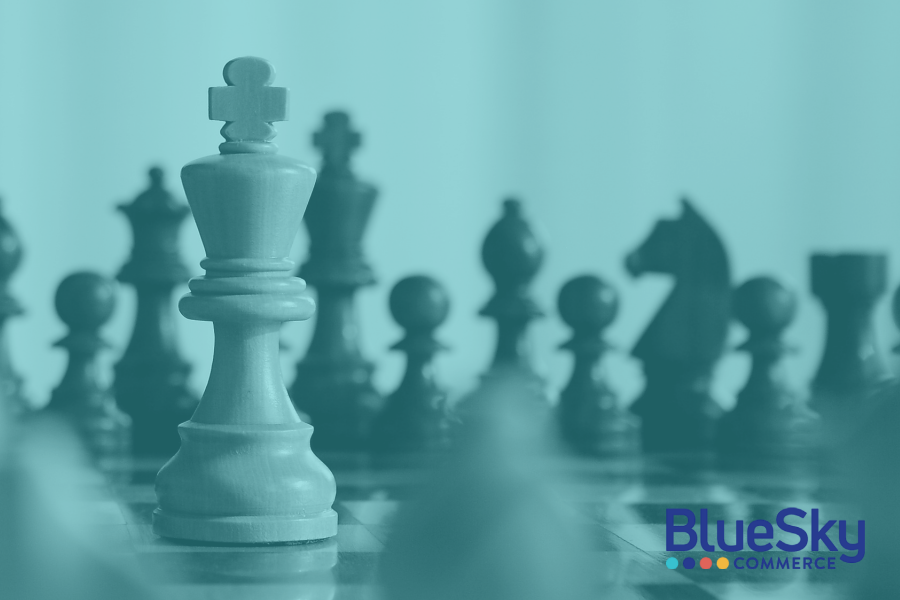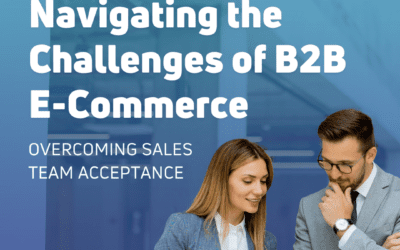In the e-commerce world, a microsite, multisite, or extended site has many interpretations or definitions. Collectively, we will refer to them as an “e-site,” which in general describes the idea of having multiple websites that address different business needs in an...
Insights
Overcoming Bad Strategy: Creating a Better Future
BlueSky Commerce Blog
Featured
Related Posts
Speed Up, Cash In – Increase E-Commerce Performance
Why Performance Matters In today's digital age, the performance of an e-commerce site is a critical factor in determining the success of an online business. A fast, reliable, and responsive e-commerce platform enhances the user experience and directly impacts sales...
Have Questions?
Get In Touch

Kevin Lyons
- The Great Debate: Buy vs. Build
- The Intention of a Mobile First Strategy
- The Simple Beauty of a Flow Chart
- Multi-Sized Lessons for Multi-Sized Approaches
- Is Strategy a 4 Letter Word?
- The Power of One
- Carpenters and Their Tools: The Operations Behind Transformations
- The Evolution of Organizational Value
- The Sweet Sound of a True Strategic Culture
- Strategic Importance of Sequencing Commerce, Customer, and Operational Technologies
Follow Us
Overcoming Bad Strategy: Creating a Better Future
I have been in leadership positions with organizations large and small for the past 25 years. In business, it is often assumed all leaders understand what strategy is and how to develop one for their team, department, or company. More times than not, strategy has been discussed without actually being practiced. Some organizations, and thus their leaders, continue down a path that impacts not only the company but their stakeholders as well. Today, organizations are facing new realities in terms of transformation, and the perpetuation of bad strategy magnifies these impacts. The reason? Strategy can be a four-letter word when not understood for its core intent: to design a way to deal with a core challenge.
Good strategy must recognize the challenge to overcome, and organizations must then develop a plan to overcome it. Organizations with good Strategy understand that the key components of sound planning are diagnosing this core challenge (sometimes called “The Burning Platform”), developing an approach (plan) to overcome it, and implementing actions to carry out the plan.
What (or Who) Makes Bad Strategy
An organization with bad strategy exhibits three telltales:
- Lack of strategic alignment at every level
- Misallocation of resources
- Insufficient operational measures

So what leads to all this bad planning? Typically it’s due to either leaders or the culture perpetuating a planning process wrought with characteristics such as:
- Confusing goals and/or objectives with strategic plans
- Restating current Affairs into fluff without a “Why” or “How” to change
- Fear of making choices
- “One Size Fits All” approach
- Oversimplifying positive vision
Each of these characteristics on their own is not Strategy; however, many of these are not bad when combined with the actual heavy lifting of Strategy. There are components of each characteristic that when implemented IN SUPPORT of the strategy are powerful tools to operationalize the plan.
Confusing Goals and Objectives with Strategy (Trickle Up and Down Planning)
Have you ever been in planning meetings where the group “goes down the rabbit hole” quickly and often? This “Trickle Up and Down Planning” typically happens in organizations that sit down for a planning “event” once a year, and department or unit leaders are asked to come up with their objectives connected to company goals. These objectives are then broken into action steps that cascade down into individual routines that may or may not be connected to other departments or units. This process causes “silos” and divides teams and individuals further.
When an organization fails to diagnose the root cause of performance, each department rarely (unless by pure luck) comes up with objectives to overcome that root cause, which in turn leads to focused actions on the wrong things. Instead of leaning in on competencies needed to overcome problems, the organization tends to work on what the current team can do. This leads to “more of the same” or worse – failure to eliminate waste geared toward competencies no longer needed.
Goals and objectives are great once the strategy is in place to organize teams and focus action. Standing alone IN PLACE of Strategy, however, they just create busywork.
The Fluff of Current Affairs (Captain Obvious Posturing)
“We will get back to 20xx levels of new customers and improve retention by 10%!” This was an ACTUAL “strategy” at one organization I worked with years ago. This type of restating the problem is ignoring the reasons why performance dropped in the first place, thus providing ZERO clarity on how to achieve it.
Underperformance is not a challenge, it is a result. That result then becomes a goal. Unless leaders offer theories on why things have not transpired positively in the past, or why this may be difficult, it is impossible to come up with a strategy.
Without a rich understanding of your opportunities, your competition, and your unique value proposition in the marketplace, you are just mining for fool’s gold.
The Fear of Making Choices (Dangers of Universal Buy-In)
Because strategy focuses resources, energy, and attention on some objectives rather than others, a change in strategy will make some people worse off, and there will be powerful forces opposed to almost any change in strategy (e.g., as a result of a change in strategy, a department head who faces losing people, funding, headcount, support, etc., will most likely be opposed to the change). Therefore, a strategy that has universal buy-in often indicates a leader who was unwilling to make a difficult choice as to the guiding policy and actions to take to overcome the obstacles. Strategy is as much about what you SHOULDN’T DO as it is about what you SHOULD DO.
The One Size Fits All Approach (Death By PowerPoint)
This characteristic will most likely get a lot of pushback, as almost every company I have worked for or consulted with has used some form of a template to deliver their strategic plan to their stakeholders. There may be a version for the board or investors, one for the internal company, and one for customers or clients. The template usually includes content such as the Vision, Mission, Values, and Action Plan the company is focusing on. Again, if this is a part of how you communicate the strategy, it is not bad. In fact, I encourage many organizations to do this today. If you use this IN PLACE of true Strategy, however, then you will wind up missing the mark on the process and the problem you are trying to solve. Thus, this “death by PowerPoint” becomes an exercise in futility doomed to be presented but never actually ingrained in the organization.
The Oversimplification of Positive Vision (Will To Succeed)
So many books, coaches, conferences, and even widely recognized public speakers have made a fortune on the power of positivity as a sole means to get what you want. This is the belief that you only need to envision success to achieve it, and that thinking about failure will lead to failure. The problem with this belief is that strategy requires you to analyze the situation to understand the problem to be solved, as well as anticipating the actions/reactions of customers and competitors, which requires considering both positive and negative outcomes. Ignoring negative outcomes does not set you up for success or prepare you for the unthinkable to happen. It crowds out critical thinking.
It is powerful to have an inspirational leader or mantra to focus the team, rally around the actual Strategy, and deliver results. But, this is in SERVICE OF the Strategy, not in SPITE OF one. Opportunities and Weaknesses, along with Threats, have as much to do with coming up with the right strategy as does your Strengths. This “SWOT Analysis” has been a widely accepted practice, albeit in a different order depending on the organization. It is not known simply as “S=Strengths”.
Turning BAD into GOOD
What I am about to say next may come as a shock to many of you. Strategy is not written in stone. It can be wrong. While you should employ methods around hypothesis-driven strategy through some concept testing to try and maximize chances of success, today’s MVP (Minimum Viable Product), Continuous Development world is different. Leaders need to listen for signals that their strategy is or is not on track and be willing to iterate. The pandemic has taught us what happens to good intentions.
Good Strategy has the following powerful characteristics:
- Leverage
- Feasibility
- Systems thinking
- Innovation
- Clarity
- Efficiency
- Change
Leverage
Strategic leverage arises from a mixture of anticipating the actions and reactions of competitors and buyers, identifying a pivot point that will magnify the effects of focused effort, and making a concentrated application of effort on only the most critical objectives to get there. The foundation of any good strategy is identifying a customer’s unmet need, a gap in the market, or a new discovery in the industry, and then putting the components together to meet the need, close the gap, or capitalize on the discovery. Once you have fully developed your advantages, your strategy becomes more about deepening them, broadening them, and creating a higher demand for them.
Feasibility
Everyone has probably heard (or experienced) the term “stretch” goals. Many leaders have abused this term to make it some dangling carrot that is on another planet rather than one that is viewable with the naked eye. Strategic objectives should be challenging yet close enough at hand for the teams to be inspired to go for it.
Big problems broken into smaller, solvable goals are the core of every great achievement. JFK challenged the U.S. with a vision to get to the moon in less than 10 years. He knew the technology could be built and the science was sound enough to say it. It was just a matter of coordination, allocation, and focus by incredible groups of people that would make it become a reality.
Systems Thinking
“You are only as good as your weakest link.” This phrase has been used many times; however, it innately leads many to just focus on that weakness. Good strategy is improving the entire chain. Understanding your competitive advantage in terms of a system rather than a single-threaded competency makes it more difficult to replicate. In other words, good strategy is a sum of the parts. That sum should be optimized in a way that overcomes shortages in any one link. This eliminates silos and moves the organization forward.
Innovation
For the last 20+ years, industry leaders have looked to Silicon Valley and the startup world for innovation. In the last 5 years, this thinking has changed. Why? What was so romantic about the early days of Silicon Valley was that these startups were resource-constrained, which forced a sustainable business model and focused innovation to turn a profit or risk folding up. Fast forward to the later years, and venture capital and the mentality of “fail fast” have made start-ups lazy. Some of the best innovation comes out of a cost-constrained environment because it forces individuals to design their way out of problems, leading to opportunistic strategic thinking.
Clarity
I was part of an organization that pioneered customer-centricity on a large scale (think thousands of locations and billions of dollars in annual revenue). What I learned and loved about this work was the laser focus on attacking a segment with a product or service that delivers more value than trying to be all things to all markets. To this day, many things developed in that space more than 15 years ago are still resonating in that organization. Focus and clarity can uncover some of the most impactful strategies.
Efficiency
I must confess, I was a victim of believing growth was a strategy at one time in my professional life. It is not. Growth is an outcome of successful creativity and efficiency through lots of the characteristics listed here. Taking out waste is an incredible objective of good strategy as much as increasing sales or products and services.
Change
Due to the pandemic, 2020 was a year of massive change that every leader and organization had to face. Some organizations had to exit. Some were able to thrive from it. Most had to learn from it. 2021 will still be about massive change. There has been a myriad of shifts and advances in technology, cost, competition, buyer perceptions, and expectations. Any good strategist should seek to do their own analysis of where an industry is going, and create a strategy based on that (rather than what pundits “predict” will happen). Combining your own proprietary knowledge of your customers, technology, and capabilities with industry trends can give you deeper insights, which analysts on the outside can’t see.
Conclusion
Now that you understand the dangers of bad strategy, the difference between that and good strategy, you may be saying, “This seems like a lot of work.” Strategy is supposed to be critical, provoking, and inspiring. As a former business owner and leader, and now sitting on the other side, I try to put my experiences at the forefront of any conversation. At BlueSky Commerce, we start with a common understanding of what is possible and what is needed at the time. We look at strategy as a balance between technology, people, process, and culture. This balance could be achieved in the form of a roadmap, followed by an actionable plan other operating units in our firm can handle; a customer journey map; an organizational chart with functional role clarity; or process automation and efficiencies to establish a new baseline in the “new way” the world interacts.
You are not alone in this. If you need a partner that will take the time to help you craft a “good” strategy AND help you execute it through our 360 approach of Strategy, Technology, Marketing, and Talent, consider contacting us today. It is never too early nor too late to identify your strategy.
Start the Conversation
BlueSky’s unmatched commerce expertise allows us to help our clients understand how to utilize omnichannel and business solutions to reach, attract, engage, and grow customers.

Related Posts
7 Effective Ways to Increase Your Average Order Value (AOV) in B2B and B2B2C E-commerce
In the competitive B2B and B2B2C e-commerce landscape, businesses are grappling with slower sales growth and the need to find new revenue streams. Leaders responsible for e-commerce strategies must focus on innovative approaches to recover lost revenue and drive...
Leveraging Voice of Customer Research in B2B E-commerce: A Strategic Imperative
Understanding stakeholder needs is crucial in the rapidly evolving landscape of B2B commerce. Conducting Voice of Customer (VoC) research has emerged as a strategic imperative for businesses aiming to transition to B2B e-commerce successfully. This blog will outline...
Navigating the Challenges of B2B E-commerce: Overcoming Sales Team Acceptance
The digital revolution has reshaped the way businesses operate, and B2B e-commerce has emerged as a critical avenue for growth. However, transitioning to B2B e-commerce is challenging, and one significant hurdle is gaining acceptance from your sales team. This...



